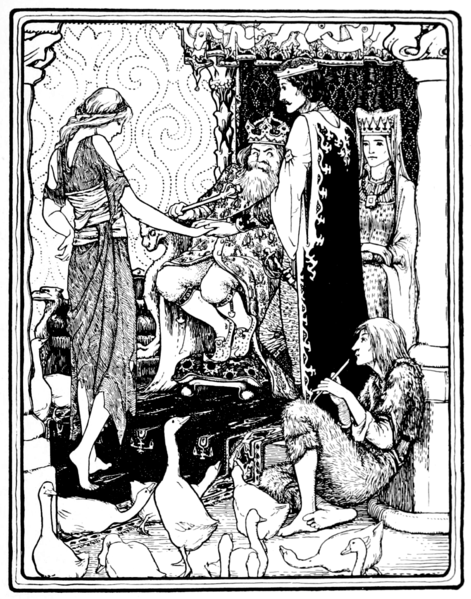This post will be dedicated to the second short story I’ve chosen for my course assignment. It is “Jack and the Beanstalk”, a fairy tale that you can find in the collection English Fairy Tales by Flora Annie Steel; the same anthology I used for the other short story that I presented, “Tattercoats”.
In this case, I’m going to present some actual and post-teaching activities in which I will focus mainly on reading comprehension, vocabulary and storytelling. The story is intended to 4th of ESO students and in order to carry out the activities, they will have to split into groups of 4 people.
In contrast to the work carried out in the other short story proposed, in which I promoted collaborative learning, now students will be asked to work cooperatively so they will be a part of a team in which each member has a specific role to fulfill, a specific task that will be an essential part of the whole task in the end. The purpose of it is to promote responsibility and autonomous learning, so they will increase personal skills together with linguistic skills. Digital skills will be also encouraged by the use of digital tools as learning strategies. Other strategies used are searching for information, and differentiation between main ideas and details.
As a final point, they will have to create a blog with Kidblog. I have already introduced you this tool in another post; it allows students to publish posts and participate in academic discussions within a secure classroom blogging community, and the most important, teachers maintain complete control over student blogs and user accounts, so I find this alternative very useful to encourage writing and autonomous skills.
As a final point, they will have to create a blog with Kidblog. I have already introduced you this tool in another post; it allows students to publish posts and participate in academic discussions within a secure classroom blogging community, and the most important, teachers maintain complete control over student blogs and user accounts, so I find this alternative very useful to encourage writing and autonomous skills.
Actual Activities
1. Find words or expressions in the story to show that these sentences are false. Each member will answer two of the statements and then they will put all the work together.
- Jack’s father was a very strong man
- Milky-white the cow always gave loads of milk
- The queer little old man wanted to exchange Jack’s cow for 5 common lentils
- Jack’s mother threw all the queer man gave to him out of the window
- Jack went up to the sky with a ladder
- The ogre’s wife didn’t give Jack anything for breakfast
- Jack took the ogre’s hen and it laid a very beautiful egg
- The orgre catched Jack when he was escaping with his magic harp
2. As you have been looking for the answers of number 1, you should have looked up for new words on the dictionary. Now, each member will provide his/her words, together with the words that you think are important to understand the story, and with all the bunch of words, you will create a single word cloud.
3. With the use of a digital tool called Character Scrapbook, you will have to analyse all the characters of the story. There are 4 characters, so each team member will have one character to evaluate. You will have to follow the indications provided in order to complete the different section:
- Ten things I know about the character
- Ten words that describe him/her
- Ten details about his/her appearance
- Ten facts about his/her personality
- Ten challenges he/she faced
- Ten accomplishments he/she achieved.
Once you complete your scrapbook, you can print (in pdf) each character’s description and put all the work together, so you will get a
Post-Activities
1. As an extension activity, you will have to think the 4 most important scenes of the story through which the whole plot would be understood (the first scene is the exchange of belongings between the queer old man and Jack, and the other 3 important scenes take place in the ogre’s white house).
When you have decided the scenes, each member of the team will have to represent one of those scenes by using the Kerproof digital tool. You can represent them by making a movie or telling a story, that's your choice. But, the important thing is that when all the scenes are created, another person has to be able to watch or read them in order and understand the story without more details.
When you have decided the scenes, each member of the team will have to represent one of those scenes by using the Kerproof digital tool. You can represent them by making a movie or telling a story, that's your choice. But, the important thing is that when all the scenes are created, another person has to be able to watch or read them in order and understand the story without more details.
2. The final activity will be the creation of a personal blog using Kidblog, in which, individually, you will have to tell all the activities you have completed by working on “Jack and the Beanstalk” fairy tale, together with your reflections and feedback.
So, this is it!!! Hope you enjoyed with my activities!! see you soon!!
Resources
- Word cloud creator: http://www.wordle.net/
- Making a movie or telling a story: http://www.kerpoof.com/
- Blog: http://kidblog.org/home/
Resources
- Word cloud creator: http://www.wordle.net/
- Making a movie or telling a story: http://www.kerpoof.com/
- Blog: http://kidblog.org/home/

















